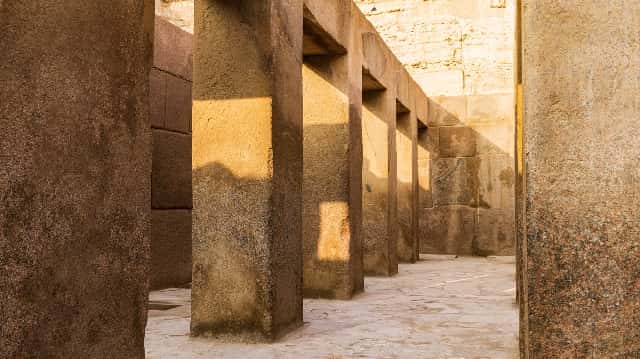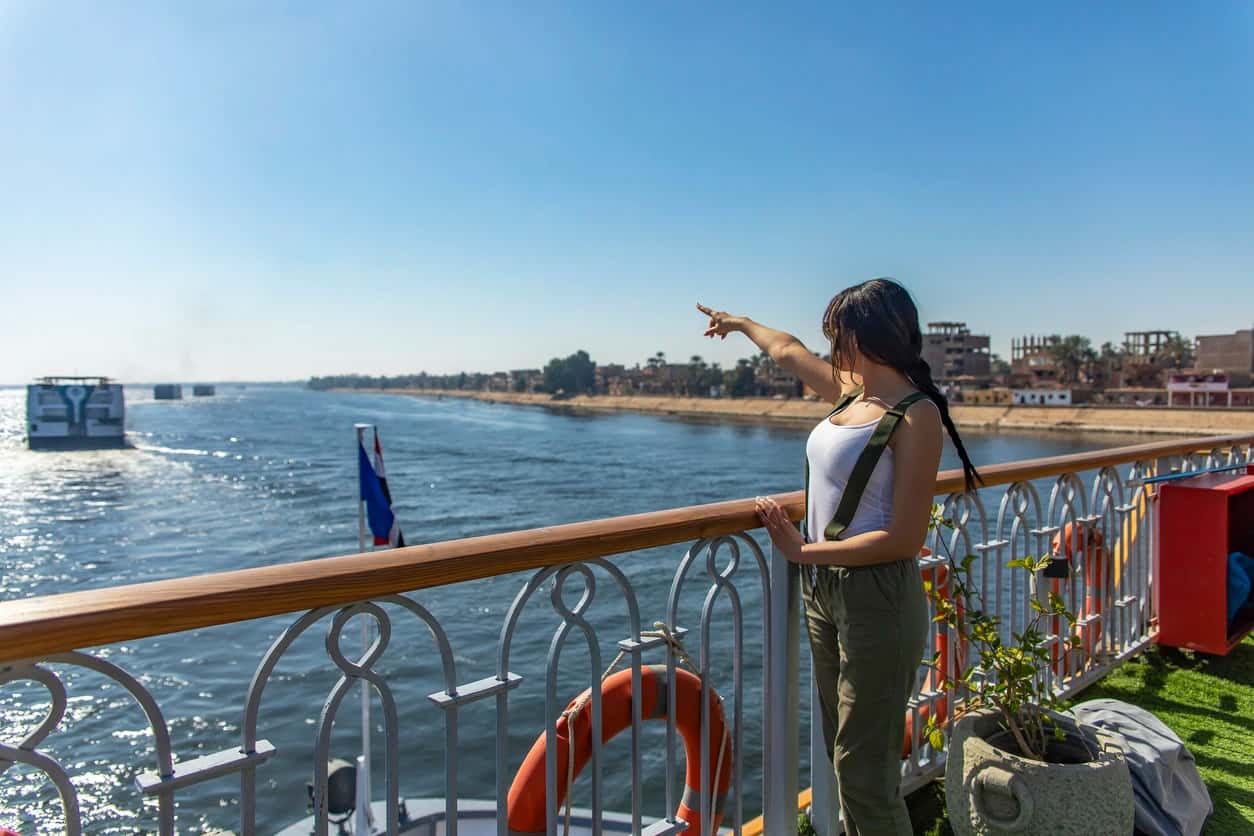
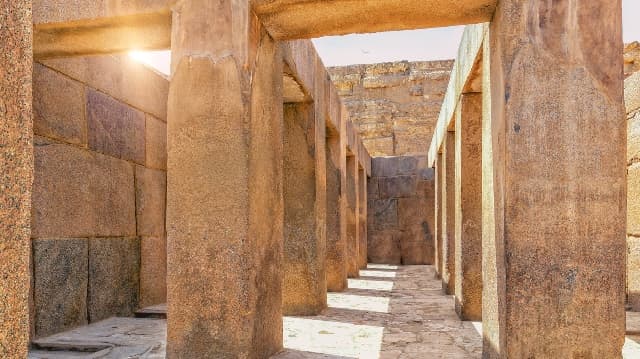
The Temple of the Valley isn’t just history—it’s an ancient puzzle of spirituality, science, and secrets waiting to be unlocked.
Next to the Great Sphinx and Khafre’s Pyramid, the Valley Temple stands as a striking testament to ancient Egypt’s spiritual and architectural brilliance. Built over 4,500 years ago, it was a sacred site for purification rituals preparing the pharaoh for the afterlife. Its construction—massive granite blocks from Aswan fitted with astonishing precision—continues to astonish modern engineers. Beneath its surface lies a maze of hidden chambers, hinting at connections to the Sphinx and secrets still buried in stone.
Below the temple lies an underground world of symbolic passages and chambers, possibly used for healing or spiritual cleansing. Rituals like embalming and the “Opening of the Mouth” were performed here to ensure the pharaoh’s eternal life. Blending sacred design with purpose, the temple reflects ancient Egypt’s deep religious beliefs. As part of the larger Valley of Temples, it reveals ongoing discoveries—like statues and tools—that bring us closer to understanding the divine vision of this extraordinary civilization.
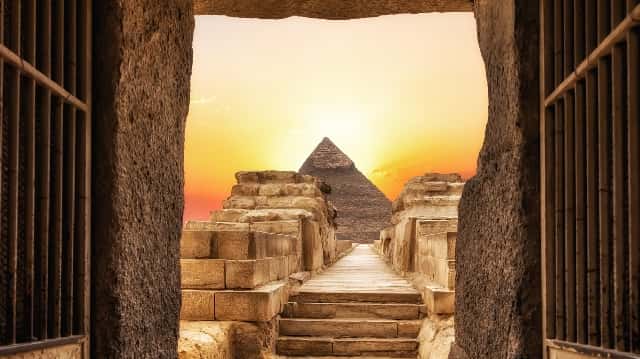
Built with incredible precision, the Valley Temple of Khafre reflects the engineering genius of ancient Egypt.
Constructed mainly from massive limestone blocks, later finished with smooth Tura limestone and striking pink granite brought from Aswan.
Its square layout (about 147 meters per side) is both elegant and structurally sound.
The temple's interior features a T-shaped hall supported by granite pillars and alabaster-paved floors, designed to support sacred rituals.
Over 20 statues of Khafre once lined the walls, underscoring the pharaoh’s divine presence.
Its clean, minimalist design emphasizes strength and purpose over decoration.
The temple connects directly to the causeway leading to Khafre’s pyramid, symbolizing the soul’s journey from life to the afterlife—both architecturally and spiritually integrated into the Giza Necropolis.
The Valley Temple of Khafre was essential to the pharaoh’s journey to the afterlife, serving as the site for purification and embalming rituals.
It likely hosted the sacred Opening of the Mouth ceremony, believed to awaken the senses of the deceased for the next world.
The temple’s close proximity to the Great Sphinx suggests a symbolic or ritual connection, reinforcing its spiritual role within the Giza complex.
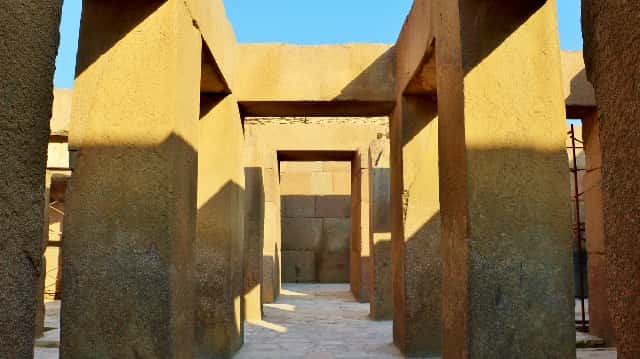
.
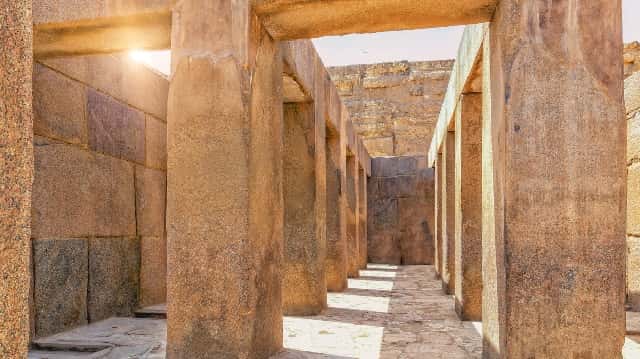
An ancient temple on the Giza Plateau, part of Khafre’s funerary complex, used in mummification and purification rituals.
Next to the Great Sphinx and near Khafre’s Pyramid on the Giza Plateau.
It hosted purification rites and the “Opening of the Mouth” ceremony to prepare Khafre for the afterlife.
Built with limestone, pink granite from Aswan, and alabaster flooring.
Buried under desert sands until the 19th century, which helped maintain its structure.
Early morning for cooler temps and fewer crowds; golden hour (late afternoon) is ideal for photos. Open daily 8:30 AM–7:00 PM.
Yes—underground tunnels, chambers, and a deep cistern lie beneath the temple’s surface.
Light, breathable, modest clothing with good walking shoes, a hat, and sunscreen.
Architecturally aligned—certain temple views directly frame the Great Sphinx.
Enormous granite pillars (up to 100 tons), precisely aligned to catch sunlight through ceiling openings.
Make your luxury trip to Egypt unforgettable with a visit to the Temple of the Valley, where history and elegance meet.
